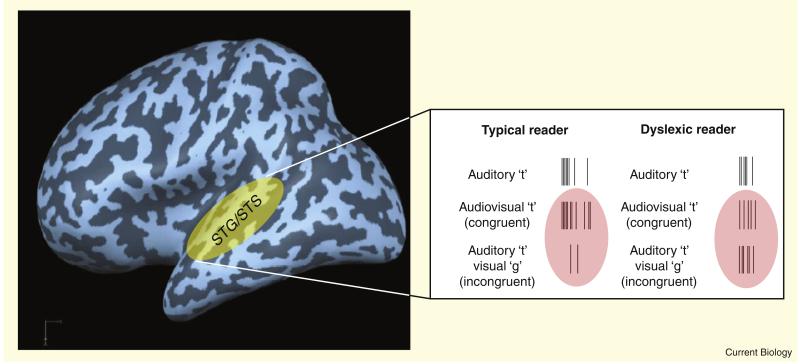Figure 1.
In the superior temporal gyrus and sulcus (STG/STS), the processing of the multisensory combination of auditory speech sounds and visual letters is different between typical and dyslexic readers. The brain template on the left shows the relative location of the STG/STS. The line drawing on the right shows the proposed neural processing differences between typical and dyslexic readers. The vertical lines are meant to represent the patterns of action potentials seen in a representative neuron in this brain region in response to an auditory speech sound alone (auditory ‘t’), the congruent presentation of an auditory speech sound and its visual correlate (audiovisual ‘t’) and an incongruent audiovisual pair (auditory ‘t’ + visual ‘g’). Note the slightly diminished response in the dyslexic readers compared with typical readers to the auditory speech sound alone, but more dramatically, the lack of the normal suppression seen in response to the incongruent audiovisual presentation (red shading).

